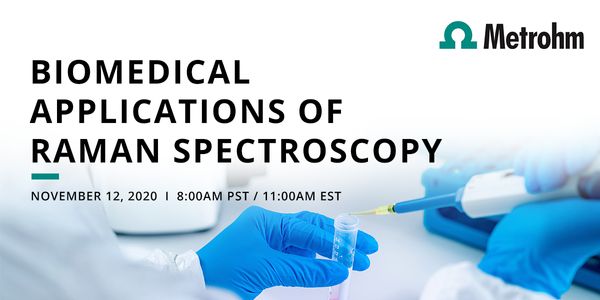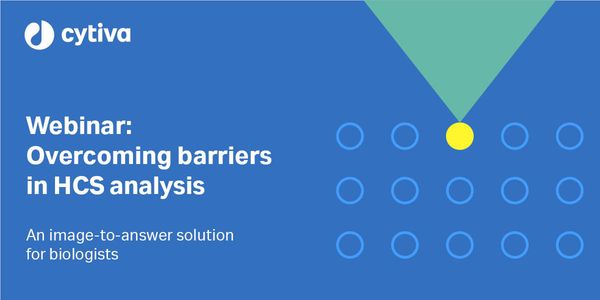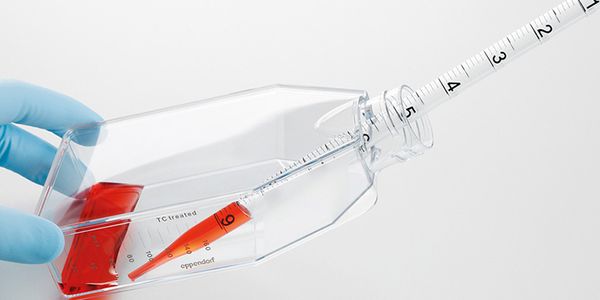Data Quality
Data quality describes how well a set of data serves the purpose it represents. Data quality is measured by considering a series of characteristics including accuracy, validity, and consistency. The completeness and uniqueness of the data is also considered when assessing data quality.
-
NOV 12, 2020 | 1:30 PMToday's presentation will cover the following topics from the perspective of a NYC based Laboratory: What have we learned year to date about CoV-2 and specifically how diagnostic testing...Speaker: Vincent Streva, PhDNOV 12, 2020 | 12:00 PMAs many parts of the northern hemisphere move into the colder months and indoors, SARS CoV-2 has begun a second infection wave that has exceeded the first surge of cases in many global regio...Speaker: Sean Taylor, MBA, PhDNOV 12, 2020 | 10:30 AMCell-free DNA (cfDNA) is a key analyte for liquid biopsy samples. Due to extremely low concentration and high degree of fragmentation, the extraction of cfDNA is technically challenging. Her...Speaker: Alexander Wolf, PhDNOV 12, 2020 | 8:00 AMDate: November 12, 2020 Time: 8:00am (PST), 11:00am (EST) Vaccine development, disease diagnosis and early medical intervention are all supported by Raman spectroscopy. This tool provides ri...NOV 12, 2020 | 7:30 AMIn 2012, the Choosing Wisely initiative was commenced by the ABIM with numerous societies putting forward lists of overused tests or procedures. The Choosing Wisely movement has spread to nu...Speaker: Jeannie Callum, BA, MD, FRCPCNOV 12, 2020 | 12:00 AMImmunohistochemistry (IHC) is used to determine spatial relationships where we can identify the localization of target proteins in specific regions and cells of a tissue. IHC has been the go...NOV 05, 2020 | 12:00 AMLearning Objectives: 1. Discuss the disease state model of substance use disorder 2. Discuss the evidence surrounding common misconceptions regarding substance use disorder...NOV 04, 2020 | 11:00 AMDATE: November 4th, 2020 TIME: 11:00am PST As cell therapies become more complex, the need for robust analytical tools to characterize such products as they enter the clinic has increased in...NOV 04, 2020 | 8:00 AMDate: November 4, 2020 Time: 8:00am (PDT), 11:00am (EDT) High-content screening (HCS) is widely used for research in quantitative cellular biology and has proven to be a valuable tool in dru...OCT 21, 2020 | 11:00 AMUsing an independent Quality Control material provides several advantages over a first- or second-party QC. This presentation will describe some actual lab QC troubleshooting steps used and...Speaker: Abobaker Mohamed Yagoot, MT (ASCP), MLT (CMLTO)Presented at: A Bio-Rad Quality Control Virtual Conference
OCT 21, 2020 | 9:00 AMLearning Objectives: 1. Understand the functionality and digestibility of starches at high heating temperatures as measured jointly by RVA 4800 and DSC 2. Acquire new knowledge on the behavi...Speaker: Dr. Yongfeng AiOCT 21, 2020 | 12:00 AMThere are many obstacles to overcome when analyzing Heavy Metals in Cannabis by ICPMS. Cannabis matrices can be difficult to prepare and analyze due to the complex components of products tha...Speaker: Shianna HinesOCT 21, 2020 | 12:00 AMAs ‘omics research advances, separations data such as chromatograms and nuclear magnetic resonance (NMR) spectra are being used as direct inputs to machine-learning algorithms ranging...Speaker: Dr. David A. SheenOCT 21, 2020 | 12:00 AMAccurate characterization of monoclonal antibodies is essential to development of biotherapeutics. Thorough understanding of biotherapeutic properties aids in the optimization of bioprocess...Speaker: Brian DomanskiOCT 21, 2020 | 12:00 AMCannabis testing laboratories play a pivotal role in the multidimensional cannabis industry. Production companies to the consumers, whole cannabis community rely on the analytical results pr...Speaker: Niranjan Aryal, PhDOCT 08, 2020 | 6:00 PMSoluble cytokine biomarkers are the master regulators of cell-to-cell communication-- the means by which one cell tells another what to do or where to go. Determining the biomarker signature...Speaker: Jenny Koenitzer, PhDOCT 08, 2020 | 1:30 PMMartin highlights various factors impacting molecular analysis from FFPE samples and key challenges and considerations while working with this precious yet challenging sample type. Learning...Speaker: Martin Schlumpberger, PhDOCT 08, 2020 | 10:30 AMImmunohistochemistry (IHC) is used to determine spatial relationships where we can identify the localization of target proteins in specific regions and cells of a tissue. IHC has been the go...Speaker: Vivian Barry, MSPresented at: Cancer Research & Oncology Week Virtual Event Series 2020
Sponsored By: Roche DiagnosticsOCT 08, 2020 | 7:00 AMDATE: October 8, 2020 TIME: 7:00am PDT, 10:00am EDT, 4:00pm CEST How often do you pipette in your cell culture lab every day? Usually, we do it so often that we tend stop thinking about ho...OCT 08, 2020 | 12:00 AMLearning Objectives: 1. Understand the evolving epidemiology of prostate cancer in the the US and globally, and the excess burden of disease borne by men of African ancestry 2. Describe the...Speaker: Matthew R. Cooperberg, MDOCT 08, 2020 | 12:00 AMBackground: Healthcare access (HCA) encompasses five important dimensions: Affordability, Availability, Accessibility, Accommodation and Acceptability. Published studies of cancer typically...Speaker: Tomi Akinyemiju, PhD, MSSEP 30, 2020 | 6:00 AMGenome editing with an expanded CRISPR-Cas tool set increases the opportunity to make intentional, targeted changes in the genome. Furthermore, improved specificity of genome editing and abi...SEP 30, 2020 | 12:00 AMLearning Objectives: 1. Using an optics- and label-free approach to CRISPR research 2. Explain current approaches to selecting the most robust gRNA for CRISPR assays 3. The opportunities tha...SEP 23, 2020 | 12:00 AMChronic kidney disease (CKD) is a global health threat, affecting over 10% of the world population, including an estimated 37 million Americans. Importantly, glomerular diseases account for...
NOV 12, 2020 | 1:30 PM
Today's presentation will cover the following topics from the perspective of a NYC based Laboratory: What have we learned year to date about CoV-2 and specifically how diagnostic testing...
Speaker:
Vincent Streva, PhD
NOV 12, 2020 | 12:00 PM
As many parts of the northern hemisphere move into the colder months and indoors, SARS CoV-2 has begun a second infection wave that has exceeded the first surge of cases in many global regio...
Speaker:
Sean Taylor, MBA, PhD
NOV 12, 2020 | 10:30 AM
Cell-free DNA (cfDNA) is a key analyte for liquid biopsy samples. Due to extremely low concentration and high degree of fragmentation, the extraction of cfDNA is technically challenging. Her...
Speaker:
Alexander Wolf, PhD
NOV 12, 2020 | 8:00 AM
Date: November 12, 2020 Time: 8:00am (PST), 11:00am (EST) Vaccine development, disease diagnosis and early medical intervention are all supported by Raman spectroscopy. This tool provides ri...
NOV 12, 2020 | 7:30 AM
In 2012, the Choosing Wisely initiative was commenced by the ABIM with numerous societies putting forward lists of overused tests or procedures. The Choosing Wisely movement has spread to nu...
Speaker:
Jeannie Callum, BA, MD, FRCPC
NOV 12, 2020 | 12:00 AM
Immunohistochemistry (IHC) is used to determine spatial relationships where we can identify the localization of target proteins in specific regions and cells of a tissue. IHC has been the go...
NOV 05, 2020 | 12:00 AM
Learning Objectives: 1. Discuss the disease state model of substance use disorder 2. Discuss the evidence surrounding common misconceptions regarding substance use disorder...
NOV 04, 2020 | 11:00 AM
DATE: November 4th, 2020 TIME: 11:00am PST As cell therapies become more complex, the need for robust analytical tools to characterize such products as they enter the clinic has increased in...
NOV 04, 2020 | 8:00 AM
Date: November 4, 2020 Time: 8:00am (PDT), 11:00am (EDT) High-content screening (HCS) is widely used for research in quantitative cellular biology and has proven to be a valuable tool in dru...
OCT 21, 2020 | 11:00 AM
Using an independent Quality Control material provides several advantages over a first- or second-party QC. This presentation will describe some actual lab QC troubleshooting steps used and...
Speaker:
Abobaker Mohamed Yagoot, MT (ASCP), MLT (CMLTO)
Presented at: A Bio-Rad Quality Control Virtual Conference
OCT 21, 2020 | 9:00 AM
Learning Objectives: 1. Understand the functionality and digestibility of starches at high heating temperatures as measured jointly by RVA 4800 and DSC 2. Acquire new knowledge on the behavi...
Speaker:
Dr. Yongfeng Ai
OCT 21, 2020 | 12:00 AM
There are many obstacles to overcome when analyzing Heavy Metals in Cannabis by ICPMS. Cannabis matrices can be difficult to prepare and analyze due to the complex components of products tha...
Speaker:
Shianna Hines
OCT 21, 2020 | 12:00 AM
As ‘omics research advances, separations data such as chromatograms and nuclear magnetic resonance (NMR) spectra are being used as direct inputs to machine-learning algorithms ranging...
Speaker:
Dr. David A. Sheen
OCT 21, 2020 | 12:00 AM
Accurate characterization of monoclonal antibodies is essential to development of biotherapeutics. Thorough understanding of biotherapeutic properties aids in the optimization of bioprocess...
Speaker:
Brian Domanski
OCT 21, 2020 | 12:00 AM
Cannabis testing laboratories play a pivotal role in the multidimensional cannabis industry. Production companies to the consumers, whole cannabis community rely on the analytical results pr...
Speaker:
Niranjan Aryal, PhD
OCT 08, 2020 | 6:00 PM
Soluble cytokine biomarkers are the master regulators of cell-to-cell communication-- the means by which one cell tells another what to do or where to go. Determining the biomarker signature...
Speaker:
Jenny Koenitzer, PhD
OCT 08, 2020 | 1:30 PM
Martin highlights various factors impacting molecular analysis from FFPE samples and key challenges and considerations while working with this precious yet challenging sample type. Learning...
Speaker:
Martin Schlumpberger, PhD
OCT 08, 2020 | 10:30 AM
Immunohistochemistry (IHC) is used to determine spatial relationships where we can identify the localization of target proteins in specific regions and cells of a tissue. IHC has been the go...
Speaker:
Vivian Barry, MS
Presented at: Cancer Research & Oncology Week Virtual Event Series 2020
Sponsored By: Roche Diagnostics
Sponsored By: Roche Diagnostics
OCT 08, 2020 | 7:00 AM
DATE: October 8, 2020 TIME: 7:00am PDT, 10:00am EDT, 4:00pm CEST How often do you pipette in your cell culture lab every day? Usually, we do it so often that we tend stop thinking about ho...
OCT 08, 2020 | 12:00 AM
Learning Objectives: 1. Understand the evolving epidemiology of prostate cancer in the the US and globally, and the excess burden of disease borne by men of African ancestry 2. Describe the...
Speaker:
Matthew R. Cooperberg, MD
OCT 08, 2020 | 12:00 AM
Background: Healthcare access (HCA) encompasses five important dimensions: Affordability, Availability, Accessibility, Accommodation and Acceptability. Published studies of cancer typically...
Speaker:
Tomi Akinyemiju, PhD, MS
SEP 30, 2020 | 6:00 AM
Genome editing with an expanded CRISPR-Cas tool set increases the opportunity to make intentional, targeted changes in the genome. Furthermore, improved specificity of genome editing and abi...
SEP 30, 2020 | 12:00 AM
Learning Objectives: 1. Using an optics- and label-free approach to CRISPR research 2. Explain current approaches to selecting the most robust gRNA for CRISPR assays 3. The opportunities tha...
SEP 23, 2020 | 12:00 AM
Chronic kidney disease (CKD) is a global health threat, affecting over 10% of the world population, including an estimated 37 million Americans. Importantly, glomerular diseases account for...























